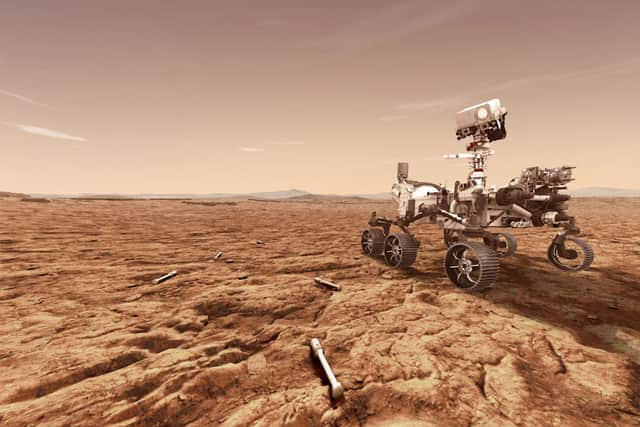Perseverance rover: NASA manages to produce oxygen on Mars to sustain an astronaut for three hours
and live on Freeview channel 276
In a world-first experiment, the American space agency was able to extract 122g of oxygen in total after the Perseverance rover - which landed in February 2021 - has been burning through the atmosphere's carbon dioxide to generate small amounts of oxygen for more than two years.


Advertisement
Hide AdAdvertisement
Hide AdAn astronaut uses around 5g of oxygen for 10 minutes, meaning that through using a device no bigger than a microwave, Nasa could extract around three hours worth of oxygen.
The device, called MOXIE, produced oxygen 16 times since the first attempt in April 2021, and the result has far exceeded NASA's original goals, according to Deputy Administrator Pam Melroy.
She said: "MOXIE's impressive performance shows that it is feasible to extract oxygen from Mars' atmosphere - oxygen that could help supply breathable air or rocket propellant to future astronauts," she said.
"Developing technologies that let us use resources on the Moon and Mars is critical to build a long-term lunar presence, create a robust lunar economy and allow us to support an initial human exploration campaign to Mars."
Advertisement
Hide AdAdvertisement
Hide AdMOXIE has created 12g in an hour at its peak, which was double NASA's aim, and it came in at least 98% purity.
Around 96% of Mars' atmosphere is made up of carbon dioxide (CO₂).
But MOXIE is able to strip the oxygen atoms from CO₂ molecules. This gives hope that production on a larger scale could support human life and provide rocket fuel during future explorations.
Comment Guidelines
National World encourages reader discussion on our stories. User feedback, insights and back-and-forth exchanges add a rich layer of context to reporting. Please review our Community Guidelines before commenting.
